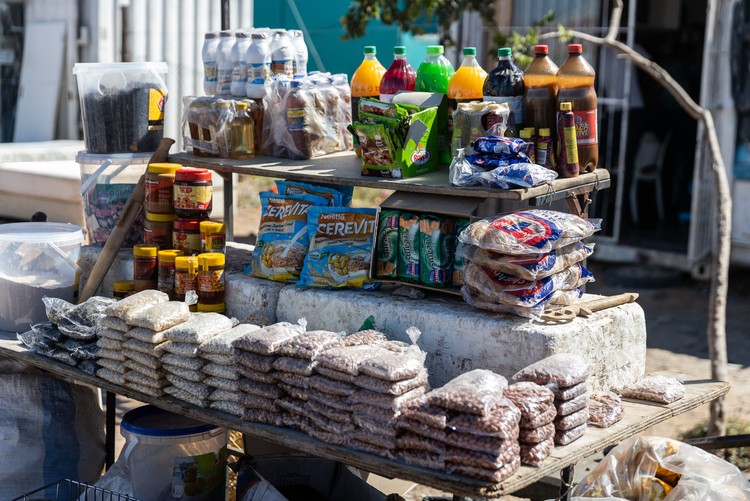Quick explainer: Inflation and how it affects you
The inflation rate measures the rise in the price of a basket of goods. Photo: Ashraf Hendricks
Stats SA announced on Wednesday that the inflation rate over the year to December 2024 was 3%, up from 2.9% for the year to November 2024. What does this mean and why does it matter?
What is inflation?
The standard measure of inflation in South Africa is the percentage change, usually over a year, in the prices of a basket of goods, weighted according to their importance in household budgets.
How is it measured?
Every month, staff from Stats SA record the prices of a long list of carefully chosen goods and services. The list is based on the spending patterns of South Africans as captured in the regular Income and Expenditure Survey. Prices are collected by Stats SA staff, in person or by phone, from all the big cities, from at least one smaller town in each province, and from a rural area in each province.
What’s in the list?
There are dozens of items in the list, ranging from instant coffee and kettles to onions, tomato sauce, cigarettes, children’s T-shirts and soccer balls. The main categories are food, transport, clothing and footwear, health, housing, entertainment, communication, education, restaurants and hotels. Not all items are surveyed every month because some change less frequently. For instance, school fees change only once a year.
What are the weights?
Each item is given a weight according to its place in the average spending pattern of households. For instance, in the urban areas, meat is weighted at 5.42 (meaning households spend 5.42% of their income on meat), vegetables at 1.27, white bread at 0.44, cigarettes at 1.85, high school fees at 0.79 and teddy bears at 0.01.
Does the list change?
The list is changed from time to time to reflect new spending patterns. For example, in 2019 several new items - cappuccino sachets, gin and fabric softener, among others - were added, and the “CDs” category was expanded to include the cost of streaming music. Stats SA says the list will be changed again this month and the new list will be reflected in January’s data.
What is the index?
The weighted prices are added up for each month, resulting in a series of monthly totals for the cost of the basket of goods. This is set to 100 for a base month (currently December 2021), resulting in an index of the cost of this basket of goods over time relative to that base month. In December, the index for the urban areas was 116.1. This means that from December 2021 to December 2024, the cost of the weighted basket rose 16.1%.
What is headline inflation?
Stats SA calculates several indices, including one for each province, one based on pensioners’ spending patterns, and one excluding very volatile items such as fuel. But the main one, the one which is usually considered to measure the country’s inflation rate, is the index based on prices in the urban areas. Headline inflation is the rise in this index over a 12-month period. (If the price index decreases, this is called deflation.)
Why does it matter?
The rate of headline inflation is very important in wage negotiations. Since prices are going up all the time, employees who get a wage increase of less than the inflation rate are actually getting poorer (they can’t afford what they could afford last year). Economists would say that this means the “real wage” has fallen. So most unions demand wage increases of at least the inflation rate, currently 3%. For example, the National Minimum Wage Commission has proposed to the Department of Employment and Labour that the increase in the minimum wage for 2025 should be the December inflation rate plus 1.5%.
In the same way, if social grants do not keep up with inflation, beneficiaries are in fact getting poorer.
The inflation rate is also important in determining the “real” cost of debt. If the interest rate on a loan is 10% and the inflation rate is 3%, then the real interest rate is 7%.
Headline inflation is also taken into account by the Reserve Bank in deciding whether or not to change interest rates.
Support independent journalism
Donate using Payfast

Don't miss out on the latest news
We respect your privacy, and promise we won't spam you.
Next: Judge Mbenenge denies sending a picture of his private parts to his secretary
Previous: City to decide on objections to six-storey Bo-Kaap hotel
© 2025 GroundUp. This article is licensed under a Creative Commons Attribution-NoDerivatives 4.0 International License.
You may republish this article, so long as you credit the authors and GroundUp, and do not change the text. Please include a link back to the original article.
We put an invisible pixel in the article so that we can count traffic to republishers. All analytics tools are solely on our servers. We do not give our logs to any third party. Logs are deleted after two weeks. We do not use any IP address identifying information except to count regional traffic. We are solely interested in counting hits, not tracking users. If you republish, please do not delete the invisible pixel.

